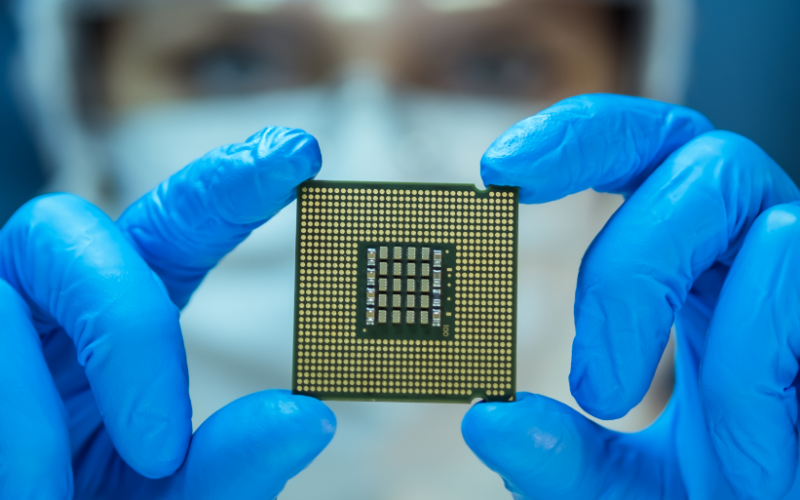by Yan Taw (YT) Boon, Director of Research, Asia, Neuberger Berman
Today’s CIO Weekly Perspectives comes from guest contributor Yan Taw (YT) Boon.
Setting aside the container ship stuck in the Suez Canal, the global shortage of semiconductors has been the international trade story of the year so far.
You’ll often hear that this is a temporary phenomenon. On the one hand, there is soaring demand for computing equipment for the working-from-home population and an auto industry gearing up for economic reopening. On the other, supply is tight because manufacturing workforces are still under pandemic constraints or, in Asia, coming under new restrictions.
These things are true, but in our view, they are far from the whole story. That story tells of an industry that is fundamentally changing, where demand is moving from specialized to ubiquitous and from cyclical to structural, where pricing power is stronger than ever, and where the need for investment capital is likely to be vast—throughout the microchip value chain.
Connected Ecosystem
The auto industry has been the most vocal about the semiconductor shortage, which has forced production-line stoppages. That’s because it relies on less sophisticated “trailing-” or “lagging-edge” chips, rather than the “leading-edge” chips used in phones and other smart devices. Most of the research and capital expenditure of recent years has gone into leading-edge manufacturing, leaving fewer and fewer aging machines for making chips to go into cars.
In other words, the real story is not that automakers can’t get chips—it’s that chip makers appear to be struggling to keep up with demand for leading-edge technology even after giving it almost all of their capital and focus.
We see this as a reflection of how fast the silicon content of our devices is growing, as existing smart devices get ever smarter and once-dumb devices, such as televisions and refrigerators, get smart.
With each successive generation, or “technology node,” the industry fits more transistors and therefore more computing power onto every chip. Each advance takes more R&D, more capital, new material and engineering, and time—on average, 12 to 18 months. That’s why semiconductor manufacturers cannot simply turn on a tap to meet smart-device makers’ demand for leading-edge technology.
Moreover, in our increasingly digitalized and connected ecosystem, this is a virtuous cycle: Each successive technology node opens up new innovations and potential applications, which can generate new demand for chips and the next step up in sophistication.
No wonder capital expenditure at the world’s largest chip manufacturer, Taiwan’s TSMC, is set to be more than 50% greater this year than last, and to total $100 billion over the next three years.
National Security
At the same time that increasingly sophisticated semiconductors are going into more and more devices, governments are becoming ever more proprietorial about supply chains.
We believe the two things are linked. When relative productivity depends upon having the latest kit in your offices, factories and warehouses, securing supply of the key components of that kit could become a national economic security issue. And when every other device is a communication device, it could become a national security issue.
As a result, we have seen outright bans on trade in chips between certain countries and companies, as well as pledges to invest in domestic production that matches the most sophisticated technology coming out of Asia, and Taiwan in particular.
U.S. President Joe Biden has pledged $50 billion to the cause as part of his administration’s infrastructure spending proposals, for example. Intel has committed $20 billion to build new fabrication facilities in Arizona. TSMC and Samsung have multibillion-dollar plans for new U.S. production capacity, in Arizona and Texas, respectively. The European Union will use its pandemic response fund to target a doubling of its semiconductor manufacturing by 2030. South Korea has recently earmarked $450 billion for advanced chip manufacturing, India is offering more than $1 billion to companies that set up chip manufacturing facilities there, and chipmaking is a key element of China’s latest Five-Year Plan.
Value Chain
This is all fundamentally changing the nature of the semiconductor industry. It means manufacturers are benefitting from strong pricing power for the first time in many years. But the most pronounced change is that the business is shifting from being highly cyclical to structural, even defensive.
As chip demand has spread and diversified beyond computers and cars, its cyclicality has diminished. Changing customer behavior accentuates the trend: Apple used to be the only company signing multiyear contracts for chips; today, with tighter supply and demand, this is becoming the norm.
We think it is important to remember that these changes are not only relevant to the semiconductor industry and its customers. They will reverberate through the entire semiconductor value chain.
To make chips, you need specialized equipment, such as that made by ASML for lithography and Lam Research to etch, deposit and clean semiconductor wafers. And to design chips, you need particular software tools, which is why software vendors such as Cadence Design Systems, Synopsys and Siemens’ Mentor Graphics are focusing so much on the Electronic Design Automation (EDA) tools that support this increasingly complex work. We think a good share of the capital expenditure we have described is likely to make its way to the top lines of companies like these.
Like every news story, the global semiconductor shortage is unlikely to be in the headlines forever. But don’t be fooled. We don’t see this as a short-lived supply crunch, but rather a reflection of our fast-changing digital ecosystems and geopolitics. We think the resulting need for capital throughout the semiconductor value chain represents one of today’s most attractive investment themes.
Copyright © Neuberger Berman















